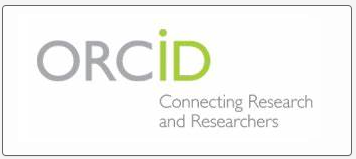«Дашнакцутюн» и ее античеловеческая пропаганда
DOI:
https://doi.org/10.52340/isj.2022.24.15Аннотация
«Ложь несет душе и телу бесконечные мученья», - писал великий грузин Шота Руставели, которого армяне, обозвав «Ашот Рустави», тоже включили в клику «хайских мыслителей». На счет лжи у Иисуса тоже были свои соображения. Он называл Сатану «лжецом и человекоубийцей».[1]. Спустя много лет апостол Павел призывал людей во имя Христа «не говорить лжи друг другу». Выходит, если, вопреки христианскому учению, у человека нет души, то телу гораздо спокойнее, и он без угрызения совести может свободно посещать бал, который организовал сам Сатана. Итак, каждый раз, знакомясь с очередным «шедевром» армянской пропаганды, все больше и больше убеждаемся, что блаженные тела некоторых научных грамотеев и политических деятелей из солнечного Еревана давно находятся в «нирване», куда, к сожалению, не доходят ни набалдашник посоха апостола Павла, ни громкие проповеди Григория Просветителя. Аномальные, а точнее аморальные амбиции, прикрываемые ложью и клеветой, являются сегодня архиважнейшим, а также материально выгодным направлением их умственно-хозяйственной деятельности.
Скачивания
Библиографические ссылки
Римлянам, 5:12
В. А. Величко. «Кавказ. Русское дело и междуплеменные вопросы». СПб., 1904 г.
В. А. Величко. «Кавказ. Русское дело и междуплеменные вопросы». СПб., 1904 г.
М. Варданян. История., т.II. М., 1950 г.
М. Кочар. «Армяно-турецкие политические отношения и армянский вопрос». Ереван, 1988 г.
Война 1877-1878 гг.», т. III, «Война в Азиатской Турции». Под ред. А. Зыкова. СПб.,1881
Ф. Мартенс. Собрание трактатов и конвенций, заключенных Россиею с иностранными государствами, т. XII, СПб., 1898
В. Гурко- Кряжин. «Армянский вопрос». БСЭ., т. III. М.,1926
А. Дарбинян. «Армения в дни национального освобождения. Воспоминания (1890- 1940)». Париж, 1947 г.
Грибоедов А.С. «Письма и 238 Гурам Мархулиа, Шабнам Нуриева записки». Баку. Изд. Маариф,1989 г.
И.Чавчавадзе. Собр. с в X т.,VIII. Тбилиси, 1957 г.
газ. «Мецамор», Ереван, 2004, №6.
С.Айвазян. «История России, армянский след». Москва, 1997 г.
Д.К.Бердзенишвили. «Ахалкалаки». «Артануджи», №7, 1998 г.
Н.Н.Жордания. «Моё прошлое» (Воспоминания), Париж, 1953 г..
ЦГИАГ. Ф. 1864, оп. № 1, д. № 17, л. 9.
Газ. «Борьба», 1918, № 96.
Г.Р.Мархулия. «Из истории возникновения армянской националистической партии «Дашнакцутюн» и ее политике в отношении Грузии в 1918-1920гг.» – «Исторические изыскания», т. II, Тб., 1999, с. 193
Мазниашвили. «Воспоминания. 1917-1925», Тб., 1927 г.
ЦГИАГ, ф. 1864, оп. №1, д. №31, л. 161
И. Шахдин. Дашнакцутюн на службе русской белогвардейщины и английского командования на Кавказе, Тифлис, 1931
«Армянский вопрос на Лозаннской конференции», Тифлис, 1926 г.
В.С.Завриев. «К новейшей истории Северо-Восточных вилайетов Турции», Тб., 1947 г.
О.Качазнуни. «Дашнакцутюн, больше ничего делать». Тифлис, 1927 г.
Г.Р. Мархулия. «Территориальные претензии дашнаков и, т.н., вопрос «раздела Армении» в политических кругах Турции, Грузии и Азербайджана». Кн. «Исторические разыскания». Абхазская организация. Т. VI, Тб., 2003 г.
А.Аставацатрян. «Иттихадско-дашнакские отноше- ния». Жур. «Айреник» («Родина»), Ереван, 1964, № 12.
О.Качазнуни. Дашнакцутюн, больше ничего делать. Тифлис, 1927 г.
ЦГИАГ, ф. 1836, оп. №1, д. №200, л. 9.
ЦГИАГ, ф. 1864, оп. №1, д. №51, л. 26.
ЦГИАА, ф. 37, оп. №1, д. №27, л. 116.
Н. Е. Дарсания. «Была ли неизбежной насильственная советизация Грузии», – «Исторические разыскания», т. I, Тб., 1998 г.
Н.Жордания. «Моё прошлое (Воспоминания»), Париж, 1953 г.)
ЦГИАА, ф. 128, оп. №1, д. №1420, л. 15
ЦГИАА, ф. 128, оп. №1, д. №1420, л. 15-16
С. В. Хармандарян. «Ленин и становление Закавказской Федерации», 1921-1923, Ереван, 1969г.
Доклад И.Джавахишвили правительству Грузии. 1926, ЦГИАГ, ф. 476, оп. №1, д. №6, л. 82-111.
Доклад И.Джавахишвили правительству Грузии. 1926, ЦГИАГ, ф. 476, оп. №1, д. №6, л. 82-111.
Г.Р.Мархулия. «Армянский вопрос» в прошлом и настоящем. «Вестник», Тб., 2007 г.










